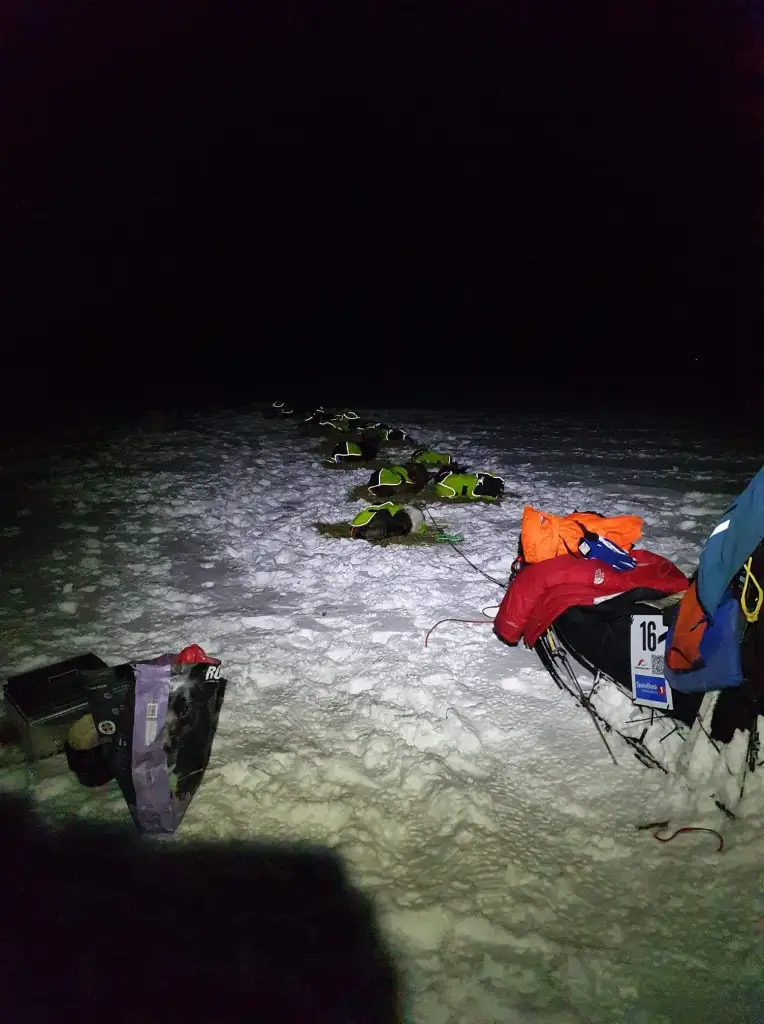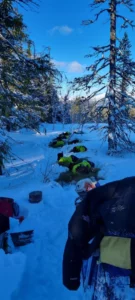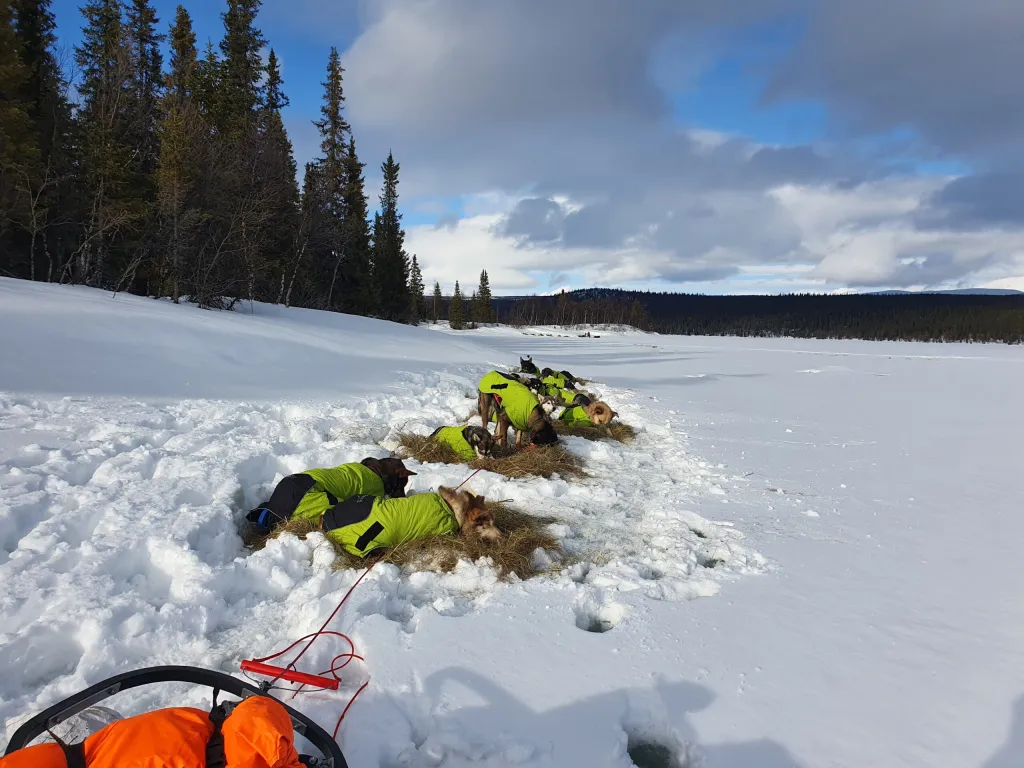One of Petters favorite tool to use in long distance races is resting on the trail. In the races the distances between the Checkpoints are not always the same and can vary between 60 and 130km. Different teams will choose different strategies, and Petter himself is switching it up a bit every year. For example this years Finnmarksløpet the distance to the first checkpoint was 132km, the distance to the second 101km. Some teams broke up the 132km in two runs and went the 101km in one go, other teams made it in 3 even runs of 78km, not resting in the first Checkpoint at all. Petter and some others didn’t even rest in the second checkpoint as their strategy was aimed to a checkpoint further down the trail.
When planning the resting strategy different factors play a role. Obviously how good and on which distance your team is trained is the most important one, but other things must be considered too. Topography (resting just before a steep mountain is always good), access to water (a small creek nearby or resting on a lake/river) and with this years temperatures time of the day of the rest (resting the dogs in the hottest time of the day) must be taken in account. In the early stages of the race weight doesn’t play a big factor since the dogs can easy carry the extra 20kg of dog food and hay to the rest place. But in the later stages of the race with less and more tired dogs 20kg extra can be a lot. In the past there was also the factor of being out of sight of the competition and leaving them in the dark as to how fast one is driving and how long one is resting. With the new GPS tracker technology used now this is not such a big factor anymore since all that information is just a click away.
Petter says the biggest upside of resting on the trail instead of in a checkpoint beside the better run length is that the musher can 100% focus on his dogs and is not distracted. The dogs will get a better rest too and the musher probably a bit more sleep than in a checkpoint. Also, checkpoints are not always the best places for resting as they can be colder or windier than other places, so when teams are resting on the trail they can pick a resting spot that is ideal for the current conditions. The downside is that the musher has to carry all the supplies with him and that there are no veterinarians that can help with questions and issues. Many of the top mushers these days use a mix between resting on the trail and resting in the checkpoints to come up with the most competitive strategy.
Like everything else also resting on the trail has to be trained. It starts with learning and practicing to find good camping spots on the fly. Sometimes a musher has just a few seconds to decide if a spot is good enough to pull over before he passed it. During the winter training month Petter and his team will do some longer training runs with camping stops so the dogs can learn to rest in unknown places. Also the musher will learn a lot about the dogs and how they eat and behave when resting on the trail. Resting good is almost as important as running good.



